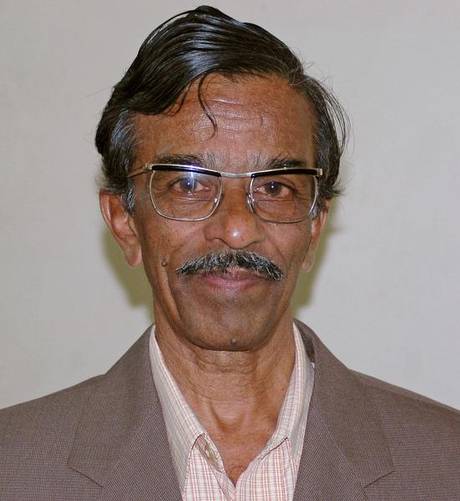
An unchanging edifice of Mangaluru’s tiffin scene, Indra Bhavan continues to keep the classic food culture alive with its delights
It’s 9 in the morning and a steady stream of people walks into Indra Bhavan in Balmatta. Seeing owner Prakash Udupa speaking to me, 61-year-old Godrick Lobo, who has been eating almost every day at the hotel since he was 15, rushes in to volunteer information. “I have my breakfast here. When I went to Dubai with my wife to be with our son, I missed the food every single day,” he laughs, holding a parcel of the hotel’s famous uppittu-avalakki (a combo of semolina upma and spiced beaten rice).

Lobo is among the many patrons the eatery has been welcoming since the late Attur Raghurama Udupa took over the three-year-old restaurant from Babu Shetty in 1952. Seventy-two-year-old orthopaedist PS Kambli, says that barring the time he left for England, he has been a regular here. “I first visited the joint when I was not even 10; my father brought me from Perinje village near Moodbidri. I’m a huge fan of the masala dosa, rava dosa, coffee and ambode (dal vada) sambar,” says Dr Kambli. He’s such a fan that food from the hotel even reached his hospital bed when he took ill recently.

Raghurama’s son Prakash, an engineer, has been managing the eatery since 1996, and his son Vishnu Prasad helps him now. The senior Udupa opened the eatery after working as a server at Dasaprakash in Madras, and as manager in Vishwa Bhavana, Mangalore. Ironically, soon after Indra Bhavan, he took over the running of Vishwa Bhavana too, following a request from its owners. The 1,200 sq ft restaurant that can seat 50 has vintage written all over it. The hotel shifted to its present location in May 2016, and Prakash added a tiled roof, and the furniture — marble-topped tables and the cashier’s wooden-and-brass desk polished with age — was carried forward.
Timeless tastes
The menu has seen little variation over time. The stars are Mangaluru buns, made using maida and Mysore banana, vada, masala dosa, moode (idli batter steamed in a cup made of oli leaves), and the savoury of the day. On a Tuesday, cook Seetharam makes batches of crisp sev. On Friday and Saturday, it’s time for salted raw banana chips and thukkadi, a diamond-shaped savoury made of maida.

Every morning, by 4.30, the team running the kitchen is in work mode. Dal is boiled, coconuts scraped, vegetables cleaned and spice powders ground to feed the 700-odd people who will drop in — ingredients have been sourced from the same suppliers since 1952. By 6.30, when the doors open, the display shelf is heavy with platter after platter of idlis, avalakki, buns, sheera and vada, and containers below hold the uppittu, chutney and sambar. The dosa counter opens at 7 and shavige and moode from 8.30 am.

In the kitchen below, accessed through a steep ladder, Seetharam lords over a vat of sizzling oil, ready to fry puris and sev. To his left are aluminium containers with mustard, cumin and chillies. And, to his right is a batch of idli, fresh off the steamer.
A consistent platter
Back in the hotel, place an order, and friendly Ramachandra Rao walks up with a list of what’s on offer. The 54-year-old has been working here since 1987. Another veteran in the ranks is the quiet, effective supplier Srinivasa Rao. PG Balakrishnan, 72, who is the cashier, has been working with the hotel since he was 16. After six months of supplying food, he was asked to handle the till. He’s been counting cash since the time a vadai cost 25 paise. While the brass coin containers in the till have been mostly replaced with steel ones, one thing that has not changed is the passion that he brings to work every morning. In the evenings, Prakash often sees doctors, a regular clientèle, rush in by 6.30, before the platters go dry.
The hotel serves only tiffin (6.30 am to 1 pm, 3.15 pm to 7.15 pm) and prices start at ₹11 for uppittu and go up to ₹32 for masala dosa. Over the years, while Prakash has contemplated expanding, he has stuck to what his father started. Someday in the future, he imagines a fine dining eatery to showcase the inherent beauty of Shivalli Brahmin cuisine, where jaggery is a must, but so are uppu, huli and kaara (salt, sour and spice). “Familiarity is our biggest strength. I know all the staff, they know all the customers… it’s a small world of its own.”
You’d tend to agree. In the nearly 90 minutes there, at least 30 people walk up to say hello, people who ate here as children, and who bring back consecutive generations to introduce them to a way of life that has managed to survive even as the world around hurtled towards the future.
It is this desire to hold on to nostalgia that brings back former Mangaluru residents too.
______________
Special dishes
- Masala Dosa
- Uppittu-Avalakki
- Mangaluru Buns
_______________
Anant Agarwal, CEO of online learning destination edX and Padma Shri awardee, still makes it a point to undertake “a pilgrimage to Indra Bhavan” on his annual trip home. Because, while he might have travelled the globe, “the goli bajjes here are the best in the world!”
This weekly column takes a peek at the histories of some of the most iconic restaurants
source: http://www.thehindu.com / The Hindu / Home> Life & Style> Food – Iconic Food / by Subha J Rao / February 22nd, 2018















